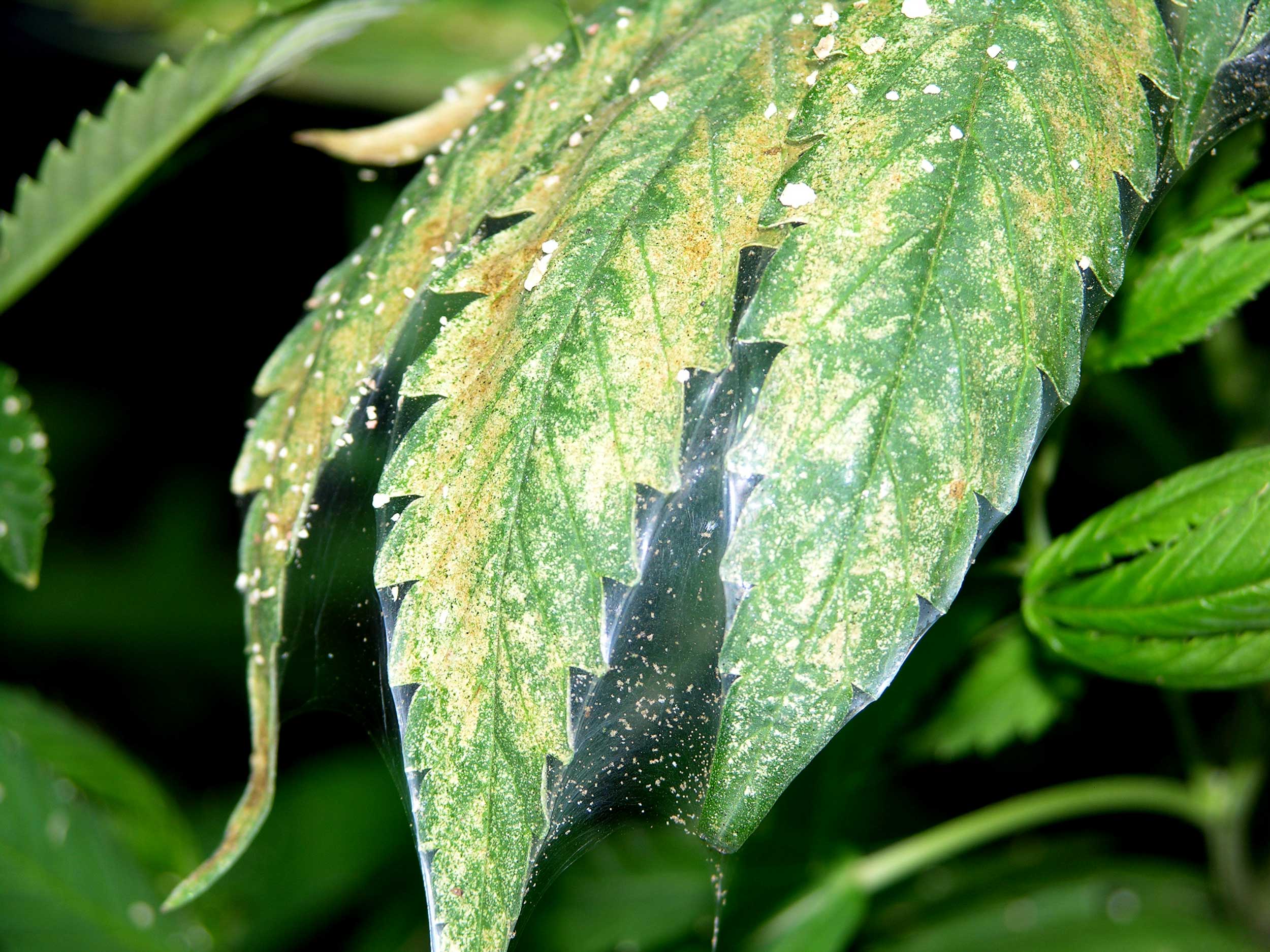In this how-to article, Growers Network introduces the new grower to using beneficial mites for pest control.

The following is an article produced by Growers Network. This article is for educational purposes only. We do not claim any responsibility for any legal or financial repercussions of your decisions. Always consult with a lawyer or attorney before making a decision that could have a legal consequence!
Hello new grower! Pest control is tricky with Cannabis.
Why? Well, it’s an ingestible, often medicinal or edible product, so staying away from some specific chemicals are a must for patient/user safety. Additionally, Cannabis cultivation is illegal in many locations, so there are generally no overarching compliance standards for pesticide safety regarding Cannabis. What’s a grower to do? Well, have you considered beneficial organisms?

What are Beneficial Organisms?
Beneficial organisms are organisms that live among your plants or soil and disrupt the life of a pest species. There are a number of advantages to using beneficials as pest control:
- Beneficial organisms are considered to be organic, as most are commonly found in nature.
- Pests don’t develop any resistance or tolerance to beneficials in a way that they might to pesticides.
- Beneficial organisms are persistent, and only need occasional reapplication.

While the focus of this article is on beneficial mites, there are many other beneficial organisms (and microorganisms) that we’ll cover in future articles, so be sure to check back often.
Disclaimer: The information contained in this article is intended for educational use only. Please check out the cannabis laws in your region before attempting to grow or purchase cannabis products or cannabis genetics. Growers Network assumes no responsibility if you break the law!
Mites
Mites are arachnids, which means they’re more closely related to spiders and scorpions than they are to other insects. That distinction doesn’t really matter here, however. What does matter is that these little critters can really help you if you know what you’re doing.

You might be saying (I’m PUN-ishing you now), “I thought we wanted to keep mites out of our grows,” and you’re not wrong. There are mite species that can potentially destroy your plants, such as spider mites and russet mites. Spider mites cause plant damage with their piercing mouthparts as they feed on the leaves and can lead to slowed growth, low yields, and death of seedlings.
However, there are predatory mite species that only go after the things that will harm your plants, including spider mites. Phytoseiulus persimilis, abbreviated as P. persimilis, is a mite that preys on several harmful spider mite species. P. Persimilis controls spider mites by laying their own eggs in the webbing that spider mites leave on plants. When the P. persimilis nymphs hatch, they are already on the prowl for spider mite eggs and nymphs, devouring them like it was going out of style. When fully grown (after about a week), a single predatory P. persimilis can devour as many as seven adult spider mites, twenty juvenile spider mites, or twenty-five spider mite eggs in a single day!

A Good Predator, But Not Perfect
For all of its benefits, P. persimilis is not perfect, and there are a couple minor downsides to these predators. First, they’re great at what they do, and can make quick work of a spider mite infestation, but they will die off in about a week without a food source. So in the event of another outbreak, a reintroduction as P. persimilis is necessary.
The second downside is that they’re very sensitive to temperature and humidity, and thrive in temperatures from 70-85 degrees and a relative humidity of 70-80% inside the plant canopy. Most growers would agree that for established plants in vegetative or flowering stages this humidity is too high and will invite a variety of other pests. Fortunately, P. persimilis is still capable of controlling pests at more cannabis friendly humidities, just not as well as they otherwise might (The im-PUN-ity!)
However, despite these minor drawbacks, predatory mites are a great option for pest control in situations where chemicals aren’t appropriate.
There you have it, predatory mite basics. Please be sure to check out all of our how to grow articles and check back soon for more beneficials profiles! Happy pest hunting!
10 Best Gift Ideas for Cannabis Connoisseurs and Growing Aficionados (2022)
December 7, 2022Developing and Optimizing a Cannabis Cultivation System
December 14, 2021Dealing with Insomnia: How Can CBD Help?
December 10, 2020Your Guide to Sleep and CBD
December 7, 2020
Do you want to receive the next Grower's Spotlight as soon as it's available? Sign up below!

Do you have any questions or comments?

About the Author
Chris DeWildt is a graduate of Grand Valley State University and Western Kentucky University. He worked in education and publishing for ten years before joining the team at Growers Network.